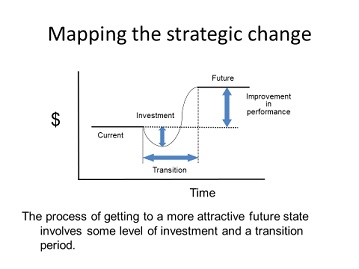The business community learned from 2020 that transformation was and is a necessity to survive when faced with adverse conditions. It has been said that all businesses, even in normal times, are constantly evaluating points of transition to assure they remain responsive to the customers and population they serve. But what is the difference between transition and transformation?
Many have written that transition is the process of modifying performance, offerings and solutions that keep pace with the on-going demand of the markets. A part of every business remaining relevant to the population it serves. On the other hand, transformation can be seen as the result achieved through a series of transitions. Transformation is achieved through effective strategic planning and a controlled investment and the achieving of a vision. It can be seen as a target operating model that reflects an improvement in performance and ultimate value creation.
Achieving the target operating model requires an objective assessment of the current environment, a vision of what can be achieved and the execution of the critical initiatives to be implemented. These initiatives, transition or inflection points take into consideration resource availability, accountability and measured investment. Labeled, mapping the strategic direction, as shown in the figure, leads a business toward transformation and measured results.

Through effective planning, controlled transitions and a well-defined target operating model, transformation becomes reality.

